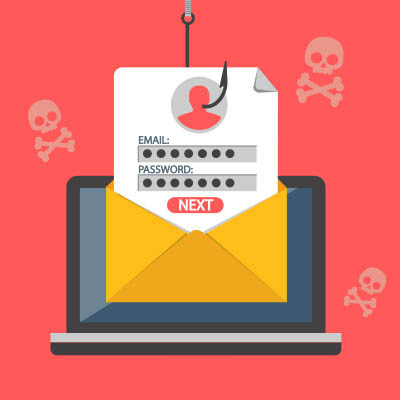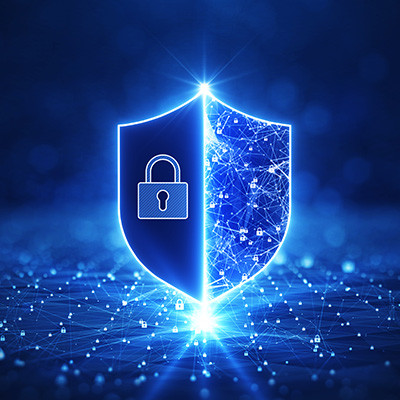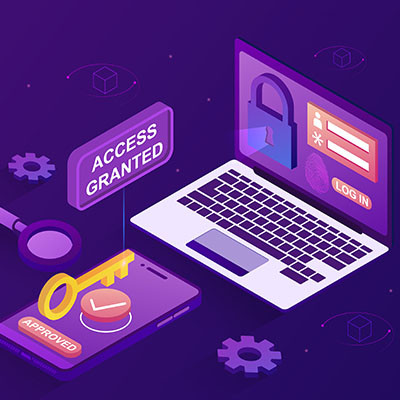BNMC Blog
Scams are so common that everyone should fear them. That doesn’t mean we should be paralyzed by them, though. They’re mostly easy enough to spot, provided you know what to look for. Today, we’re covering these red flags and how you can identify a scam and consider all warning signs to make it out of such a situation unscathed.
Encryption is a vital tool for small businesses to protect their sensitive data from hackers. At its core, encryption converts readable data into an unreadable format using a specific algorithm and an encryption key. This means that even if a hacker gains access to the data, they cannot understand it without the corresponding decryption key. This layer of security is crucial for small businesses, which often handle sensitive customer information, financial records, and proprietary business data. By encrypting this data, businesses can ensure that it remains confidential and secure from unauthorized access.
For those of you who are fans of American football, you are familiar with the interception. When your team’s quarterback throws a pass that ends up in the other team's possession, it can be one of the most frustrating plays for a fan. Let’s discuss the man-in-the-middle (MitM) attack, which is effectively a hacker intercepting data as it is passed from one person to another. Let’s get into it.
It’s hard to vouch for the idea that someone is constantly being attacked by cyberthreats when there is no real tangible evidence to support this notion. People won’t trust words of warning against threats that they cannot see and won’t feel threatened by them until they’re knocking on their door. Today, we want to discuss how you can turn around these challenges, particularly when it comes to training your staff on the importance of cybersecurity.
When you live a life connected to the Internet, there is always a chance that you will encounter a threat that is disguised just a little too well to be discovered. We wanted to write today about one particular social media threat that we think might have been good enough to fool an unsuspecting user.
With so many dangers lurking on the Internet, it’s no small wonder that cybersecurity is an absolute must for all kinds of businesses these days, big or small. It can be challenging to know what you need to do to protect your business, though, which is why we work to promote awareness of security best practices for SMBs. Let’s go over some of the most effective ways you can secure your organization today.
The more your business depends on its technology, the more problems with cybersecurity can derail all the good things you have going on. Today, businesses are more susceptible than ever to hackers and scammers that want to gain access to their network to deploy malware, siphon information, and more. Let’s discuss four points of emphasis every business needs to secure their network and infrastructure.
Would you believe it if we told you that the members of Generation X, Millennials, and Generation Z are more likely to fall for online shopping scams than those aged 60 or over? Well, according to the Federal Trade Commission, the numbers aren’t even close. If you’re under age 60, you’re 86 percent more likely to fall prey to scammers.
In December of 2021, Twitter suffered from a vulnerability related to one of its APIs. In July of the following year, 5.4 million users had their data leaked, as a result of this vulnerability, and put on sale through the black market. Another hacker has recently put this data up for sale, proving that these API attacks are quite problematic not just for big social networks like Twitter, but all businesses.
We are beginning to see the terms “artificial intelligence” and “machine learning” popping up in a lot of places recently. They typically are used to describe software that has learning capabilities. With this advancement, many organizations are able to automate more of their business and reduce costs over time. Unfortunately, any good thing also comes with some drawbacks. In today’s blog we will introduce you to a phenomenon called data poisoning and what drawbacks it can have for your business.
If you think there is no way that a hacker could set sights on your business or impact your operations with a Distributed Denial of Service (DDoS) attack, then you’ve got another thing coming. Even the Vatican’s official website has fallen prey to such an attack, proving that even large organizations can suffer from these types of attacks.
We know we hype up multi-factor authentication, or MFA, quite a bit on this blog, and for good reason. When implemented correctly, it can be an effective deterrent for many cyberthreats out there. However, as they often do, hackers have found ways around MFA. Let’s take a look at how hackers find ways around MFA protection.
It always helps to be a little skeptical of any new USB drives appearing in the workplace, especially if you are security-minded. Distributing threats via USB drives is a common practice amongst hackers, and a new threat called Raspberry Robin has the potential to be a serious problem for unsecured businesses with poor security hygiene.






















